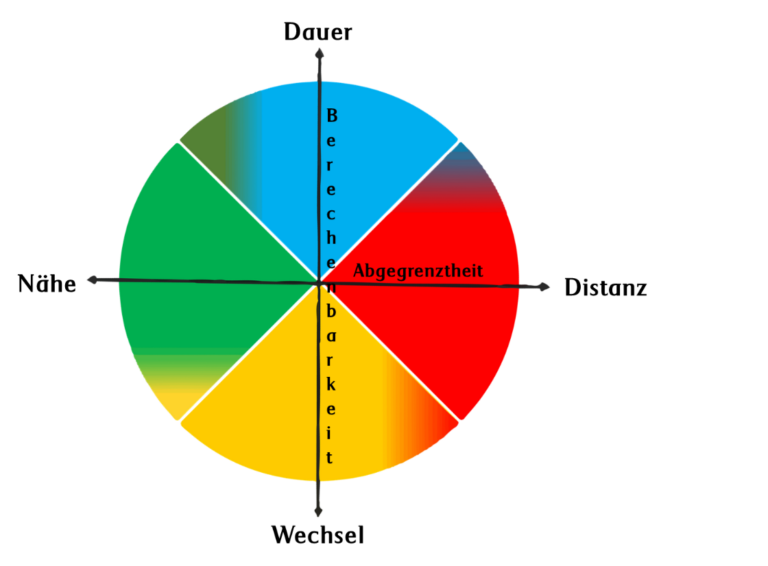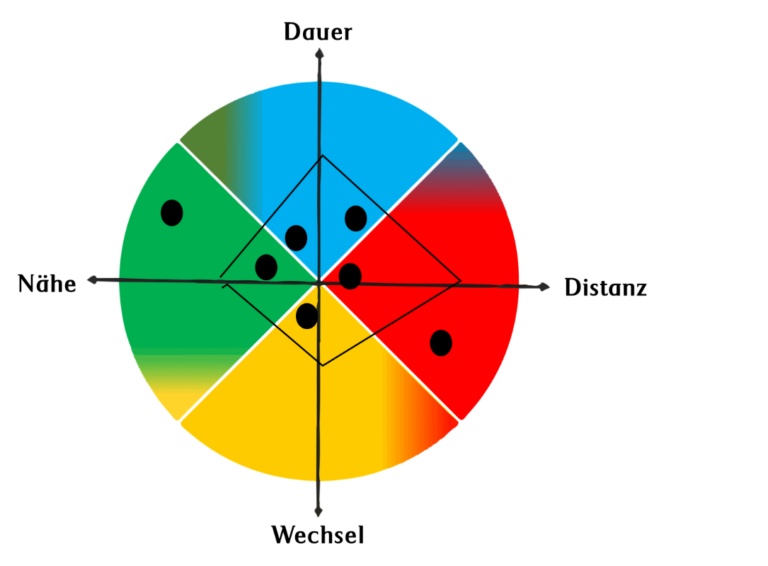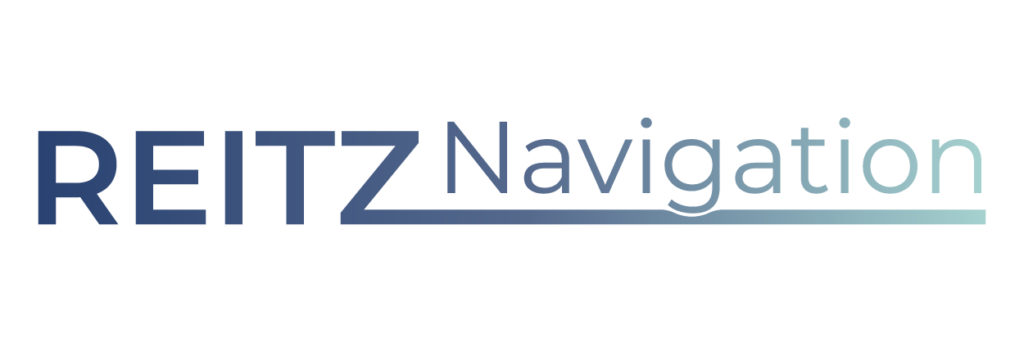
HEALTHY LEADERSHIP
HOW TO SET UP AND LEAD A HEALTHY TEAM WITH TYPOLOGY MODELS
People are different – of course, we all know that. Nevertheless, some kind of guideline for dealing with colleagues would sometimes be really helpful, wouldn’t it? Unfortunately, there is no magic formula for people working together in teams, but there are tools that can help!
Although every person is individual and complex, most of us have specific behaviours and preferences. Through them, we can be assigned to one or more types, or our specific orientation with regard to certain categories can be determined. Typology models are a good tool to recognise oneself and one’s own standard reaction and communication patterns. Furthermore, they help to analyse and understand the structure and composition of teams.
This article first introduces you to different approaches to personality types and discusses their usefulness. Then it is all about the Riemann-Thomann-Model, as an example of a very valuable typology model for teams. Finally, you can expect useful impulses for the practical use of this model and how you can use it to achieve healthy leadership.
PERSONALITY TYPES AND PERSONAL DISPOSITIONS
In psychology, the whole spectrum of personality typologisation is rather controversial. We too are convinced that everyone has a unique variety of different personality traits and that it is important to take this into account in our daily interactions with people. Nevertheless, most people tend to be more inclined towards certain behaviours and define themselves particularly by these. The different approaches to personality types can help to become clearer about one’s own personality and typological characteristics, and they can also help to classify people in one’s social environment. The best-known of these are the Myers-Briggs test and the Big Five principle.
THE MYERS-BRIGGS TYPE INDICATOR (MBTI)
The Myers-Briggs Type Indicator (MBTI) focuses on four indicators: drive, attention, decision-making and lifestyle. Within these four indicators, each is then further subdivided into different characteristics. For example, the drive indicator is intended to provide information about where one’s own motivation comes from. The categories introversion and extraversion should make it clear whether a person is motivated more by social interactions or rather draws strength for new projects by having time for themselves and being able to concentrate on themselves. As a result of this test, the person is then assigned to one of 16 personality types. However, this is not a matter of assigning a label to a person, but rather of identifying the strongest personal tendencies in the given categories at the moment of the test. Of course, this can change in the course of a (professional) life. Therefore, here again as a reminder: typologies are only a snapshot and can never be applied 100% to a person.
THE BIG FIVE MODEL
The so-called Big Five Model takes a different approach. Here, the focus is not on personality types, but on the characteristics of individual people. The traits used for this purpose have been identified by researchers as those that mainly define people’s personalities:
- Neuroticism (tendency to emotional instability, anxiety and sadness)
- Extraversion (tendency to be sociable and optimistic)
- Openness to experience (inclination to inquisitiveness, interest in new experiences)
- Agreeableness (inclination to altruism, cooperation and compliance)
- Conscientiousness (inclination to discipline, to high performance, to reliability)
Based on the Big Five, scientists from Northwestern University defined four personality types in a large-scale study with approximately 1.5 million participants from all over the world: The average, the reserved, the egocentric and the exemplary type.
The knowledge of typology models is particularly helpful in a professional context and they are also often used as effective tools in coaching of individuals and teams. This is because by knowing one’s own characteristics and those of other team members, a way of communicating within the team can be designed that is better suited to the needs of the individual. In this way, misunderstandings can be prevented and communication can be more effective.
In addition, the composition of a team can be determined in this way. Through targeted promotion of these individual team structures, harmonious cooperation is promoted. This creates more health and balance in the various teams and ultimately in the whole organisation.
THE RIEMANN-THOMANN MODEL – THE TOOL FOR TEAM ANALYSIS
In our opinion, the best tool for team analysis is the Riemann-Thomann-model. Similar to the Big Five model, the Riemann-Thomann-model also examines the traits and basic needs of individual people. On the basis of these individual characteristics, the respective behaviour of a person, his or her way of making decisions and the respective communication style can be better understood.
The model is based on the poles “compulsion/neurosis”, “schizoid”, “hysteria” and “depression” defined by Fritz Riemann in 1961 in his work “Basic Forms of Anxiety”. These four poles of personality were intended to serve as a typification of personality. A little more than 10 years later, Christoph Thomann developed the model further and used it for couple therapy. For this purpose, he detached himself from the categories of anxiety and transferred the poles of personality into the four basic tendencies of distance, closeness, constancy and change. In pairs, these are in a polar relationship of tension with each other:

HE IMPORTANCE OF THE BASIC ASPIRATIONS
- Constancy orientation: Individuals who are situated in duration value principles, order and structure. They are comfortable within fixed routines and are highly reliable, work well structured and can organise well.
- Distance orientation: People with a high expression in the distance quadrant are very businesslike, think logically and act rationally. In addition, they attach great importance to their independence and like to organise their work themselves.
- Change orientation: Individuals who are strongly situated in change need flexibility, creativity and are open to innovations. They also often follow their impulses and let themselves be guided by stimuli.
- Closeness orientation: People who have a high expression in the proximity quadrant seek connection with others. They are very in need of harmony and place great value on relationships based on trust. They are also particularly committed to a community and empathetic.
According to this model, those who have a similar profile in the 4 quadrants get along best, as they share similar values and patterns of communication and behaviour.
Every person has all the basic aspirations in varying degrees. Depending on the situation, these expressions can change. This model makes it clear that we humans can act, react and communicate differently depending on the role we find ourselves in. Nevertheless, each of us always remains himself or herself. A person can therefore be very closeness-oriented in his or her private environment, but at work appear mainly distant and also be perceived as such in the team. For this reason, it often happens that we are friends with a person in our private lives, but conflicts arise in the professional environment.
CROWD, TROOP, TEAM AND COMMUNITY – THE RIEMANN-THOMANN MODEL APPLIED TO GROUPS
This model is particularly valuable for analysing teams. If the characteristics of the members of a group are known, a so-called home territory can be created for the entire group:

In our example, it is a team that is located more in the quadrants of constancy and distance. However, it can also be seen that the main trait of individual team members is very distinct from the home area of the group. For the leader of such a team, this means that although the needs of the home area of constancy-distance should be addressed first, the team members who are outside this area must also be accommodated.
If a leader is aware of these characteristics of his or her employees, he or she can show more consideration for them and communicate with them in a way that is appreciative and adapted to their needs. This leads to a healthier atmosphere in the team and also has positive effects on the commitment of the individual employees. Ultimately, this contributes to more positive and healthier work in the entire organisation.
AT A GLANCE: THE DIFFERENT TEAM TYPES ACCORDING TO THE RIEMANN-THOMANN MODEL
- Constancy-distance team: A precise way of working, discipline and good organisation characterise this team – a real troop. The best results can be achieved here through a systematic and objective approach to leadership. However, the sense of community can come up short in such teams.
- Duration-closeness team: This is a team in which the members know and trust each other well. Everyone pulls together and stands up for each other. Although this community is very good for the atmosphere in the organisation, critical discussions take place less frequently in such teams. Innovative impulses can be lost and the final result can suffer. What is needed here is a leader who is also able to ask critical and fact-oriented questions.
- Change-distance team: Here, strongly autonomous people work together on a project, whereby the tasks are clearly distributed and delimited from each other. Often, such a bunch is characterised by the fact that many innovative ideas arise within this team. At times, however, there is a lack of implementation of an idea because the bond among the team members is not so strong and good ideas are then quickly replaced by new ones generated by an individual employee. By focusing on fostering stronger cooperation, such teams can be particularly promoted.
- Chance-closeness team: Through the balance of flexibility, creativity and a sense of community, teams with this home territory can truly be called teams. However, this balance can also become a source of problems for the team, namely when colleagues with a strong alternation trait and those with a strong closeness trait stand against each other in a matter and their needs for living out their own autonomy on the one hand and the need for harmony on the other cross. A leader can intervene here by introducing an objective level and imposing discipline so that the team can focus on achieving the goal.
HOW TO USE THE RIEMANN-THOMANN MODEL FOR HEALTHY LEADERSHIP IN PRACTICE
Leaders who put together a team should use the Riemann-Thomann model as a tool, because a functioning, motivated and innovative team needs people who are in different states of development. There should be personalities located in the quadrant of comstancy, change, closeness and distance in a team so that a good balance is achieved. After all, being a team player means contributing one’s personal strengths to the team. This is the only way that a team can achieve results that each individual is not capable of on his or her own.
A good leader with a focus on healthy leadership makes sure that the individual needs of the personalities in the team are taken into account and that no one is excluded. This is not always easy, but it is absolutely rewarding, because people with different characteristics are sources of innovative ideas that can open up new perspectives on work processes, projects and routines. Even in existing teams, it can help to analyse the orientation of employees – for example, could a permanently oriented employee provide more structure in a somewhat chaotic team? The appreciative promotion of such synergy effects creates a sense of a team spirit, which at the same time contributes to the health of all employees. This is part of what we mean by Health n’Leadership.
